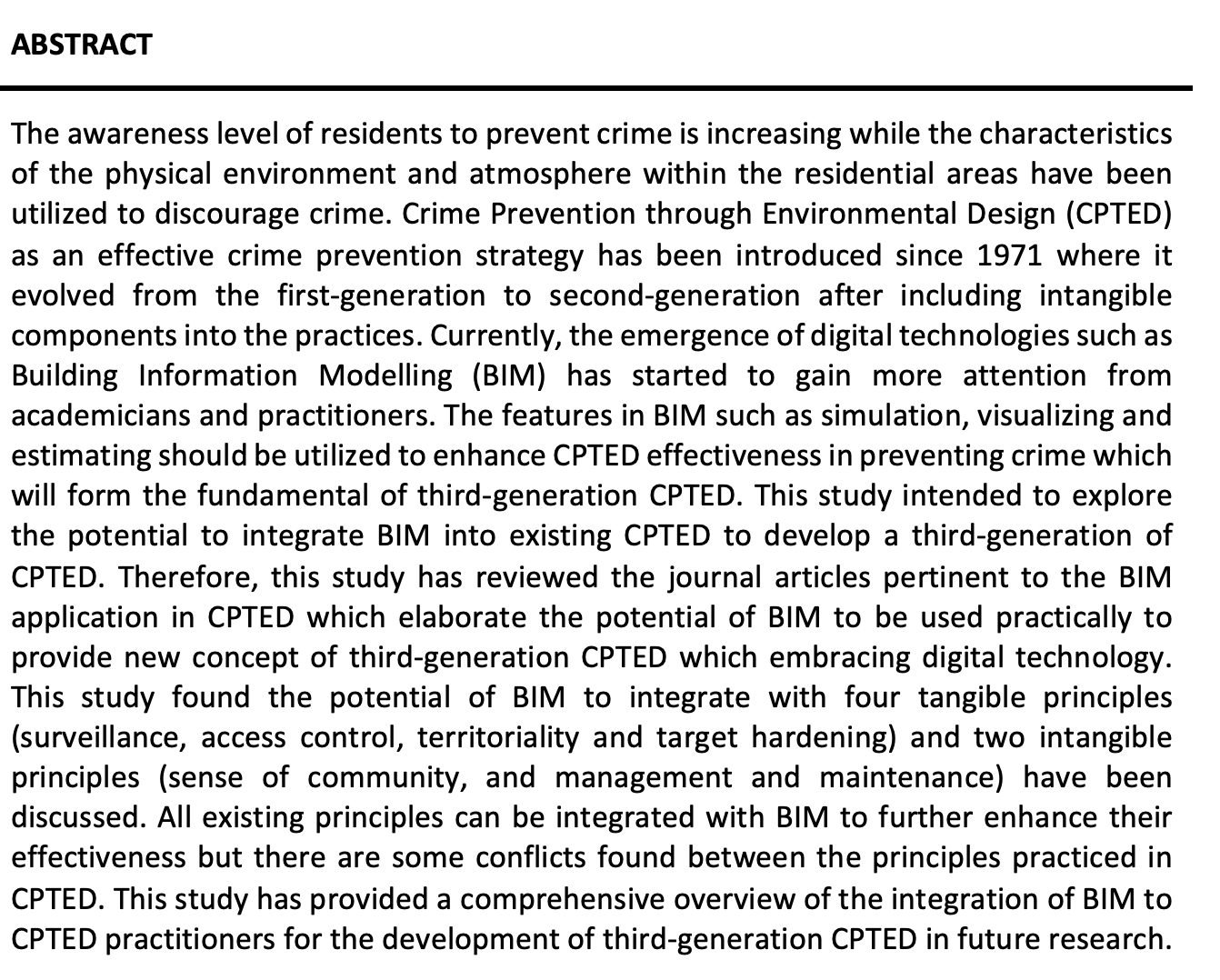Integration of Building Information Modelling (BIM) in Third-Generation Crime Prevention through Environmental Design (CPTED)
DOI:
https://doi.org/10.37934/araset.32.3.438450Keywords:
Building Information Modelling, Third Generation, CPTED, Crime Prevention, Digital TechnologiesAbstract
The awareness level of residents to prevent crime is increasing while the characteristics of the physical environment and atmosphere within the residential areas have been utilized to discourage crime. Crime Prevention through Environmental Design (CPTED) as an effective crime prevention strategy has been introduced since 1971 where it evolved from the first-generation to second-generation after including intangible components into the practices. Currently, the emergence of digital technologies such as Building Information Modelling (BIM) has started to gain more attention from academicians and practitioners. The features in BIM such as simulation, visualizing and estimating should be utilized to enhance CPTED effectiveness in preventing crime which will form the fundamental of third-generation CPTED. This study intended to explore the potential to integrate BIM into existing CPTED to develop a third-generation of CPTED. Therefore, this study has reviewed the journal articles pertinent to the BIM application in CPTED which elaborate the potential of BIM to be used practically to provide new concept of third-generation CPTED which embracing digital technology. This study found the potential of BIM to integrate with four tangible principles (surveillance, access control, territoriality and target hardening) and two intangible principles (sense of community, and management and maintenance) have been discussed. All existing principles can be integrated with BIM to further enhance their effectiveness but there are some conflicts found between the principles practiced in CPTED. This study has provided a comprehensive overview of the integration of BIM to CPTED practitioners for the development of third-generation CPTED in future research.
Downloads




























